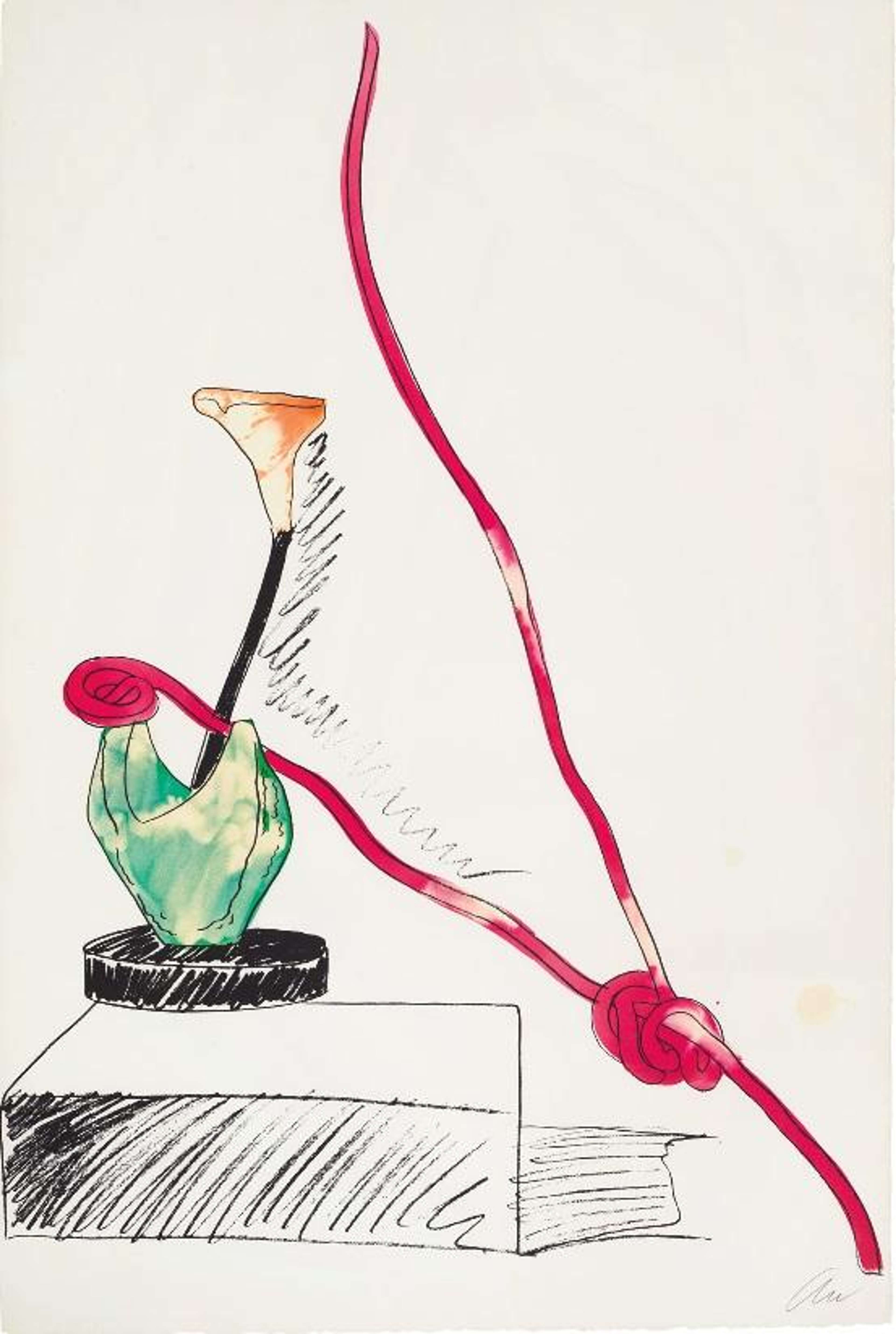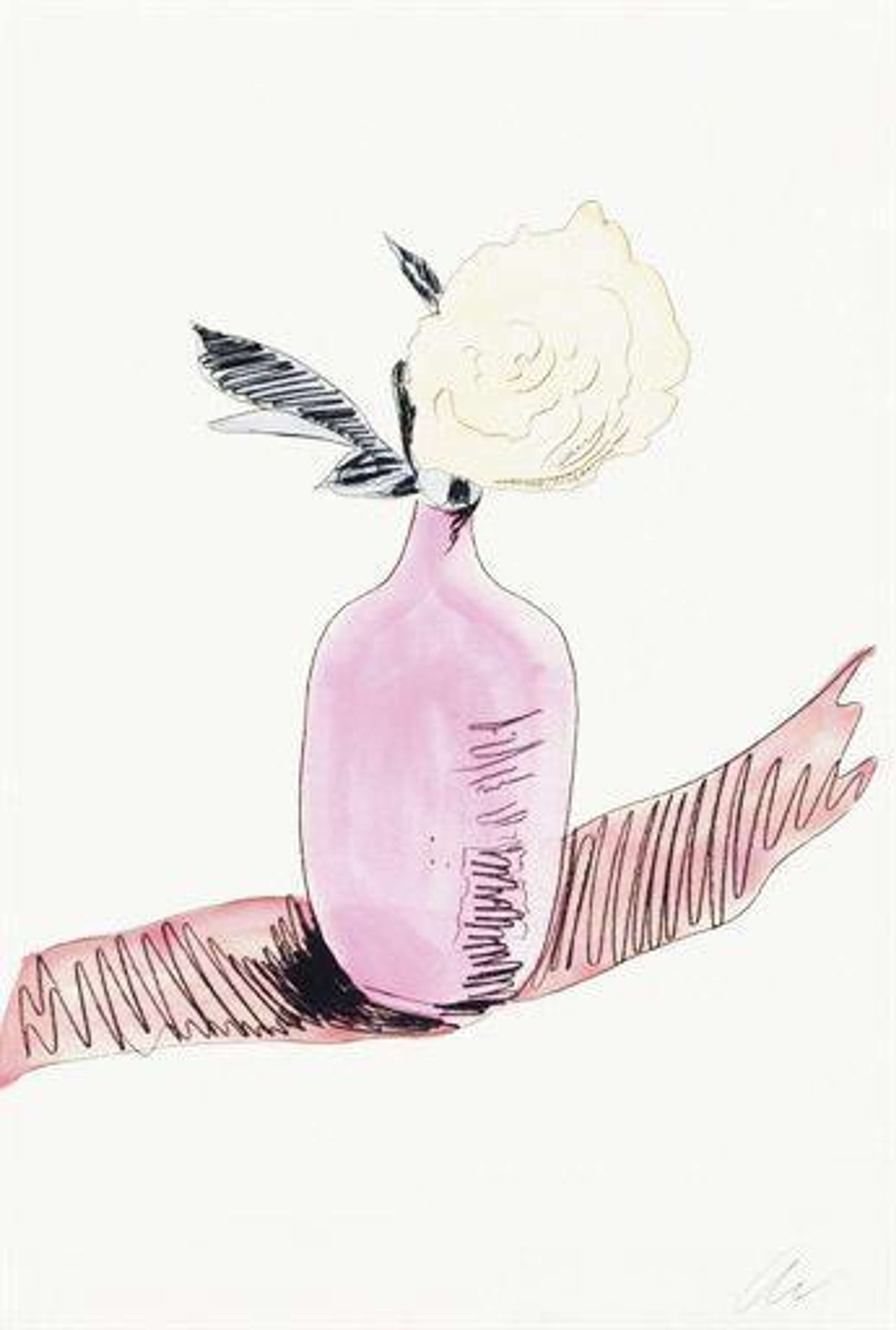10 Facts About Andy Warhol's Flowers (Hand-Coloured)

 Flowers (F. & S. II.111) © Andy Warhol, 1974
Flowers (F. & S. II.111) © Andy Warhol, 1974
Interested in buying or selling
Andy Warhol?

Andy Warhol
487 works
Andy Warhol’s Flowers (hand-coloured) are a collection of prints created in 1974. In this collection, Warhol takes recognisable flowers, such as roses and sunflowers, and reproduces them through a realistic lens, maintaining the subject matter in its conventional form. Warhol adds his own artistic touch through the use of abstract shadows and shading.
Warhol was inspired by wallpaper designs to create this print series.
 Flowers (F. & S. II.118) © Andy Warhol, 1974
Flowers (F. & S. II.118) © Andy Warhol, 1974The collection is based on images of flowers that Warhol came across in a wallpaper catalogue. As well as being based on wallpaper designs, the flowers are reminiscent of 19th century Japanese woodblock prints which show delicately rendered flower arrangements.
These prints were created using an opaque projector.
 Flowers (F. & S. II.114) © Andy Warhol, 1974
Flowers (F. & S. II.114) © Andy Warhol, 1974 Using wallpaper samples and the book Interpretative Flower Designs by Mrs Raymond Rus Stolz as his source material, Warhol used an opaque projector to copy from these images and create the delicately rendered image.
Every print in this series is unique.
 Flowers (hand-coloured) © Andy Warhol, 1974
Flowers (hand-coloured) © Andy Warhol, 1974Every print in the series is unique in that they were each coloured by a studio assistant with Dr. Martin’s aniline watercolour dyes. Flowers (hand coloured) amalgamates the hand-drawn with the mass-produced, and originality with appropriation, in his use of the screen printing technique, hand-dying and the copied image through organically drawn lines.
Warhol used a watercolour technique in this series, very different to his more famous prints.
 Flowers (F. & S. II.112) © Andy Warhol
Flowers (F. & S. II.112) © Andy Warhol In these prints, Warhol uses Dr. Martin’s aniline watercolour dyes so that the colours are free to flow and bleed into one another beyond the structures of their lines.
This series is reminiscent of Warhol’s early days as an illustrator.
 Flowers (black and white) (F. & S. II.105) © Andy Warhol, 1974
Flowers (black and white) (F. & S. II.105) © Andy Warhol, 1974The Flowers (hand-coloured) collection resonates strongly with Warhol’s early illustrations from the 1950s. After moving to New York in 1949, Warhol started working as a commercial fashion illustrator, producing drawings for popular magazines like Vogue, Glamour Magazine and Harper’s Bazaar.
Warhol won awards as an illustrator.
 Flowers (F. & S. II.116) © Andy Warhol, 1974
Flowers (F. & S. II.116) © Andy Warhol, 1974Before spearheading the Pop Art movement, Warhol was a skilled illustrator and won many Art Director’s Club awards for his work on LP cover designs, I. Miller shoe drawings and other advertising design work.
Flowers (Hand-coloured) demonstrates Warhol’s love for fine line drawings.
 Flowers (F. & S. II.113) © Andy Warhol, 1974
Flowers (F. & S. II.113) © Andy Warhol, 1974The works differ from other prints by the artist which emphasise composition over outline, focussing more on layers and geometric shapes than the actual details of the subjects being depicted.
This was not the first time Warhol depicted flowers.
 Flowers (F. & S. II.68) © Andy Warhol, 1970
Flowers (F. & S. II.68) © Andy Warhol, 1970The flowers in this collection differ significantly from Warhol’s more famous collection of Flowers from 1970. The 1970 Flowers are more abstract and far more similar to Warhol’s signature Pop Art style which is characterised by the use of bright and bold colours, layers of paint and the use of the screen printing technique.
This series reflects Warhol’s wide ranging artistic ability.
 Flowers (F. & S. II.111) © Andy Warhol, 1974
Flowers (F. & S. II.111) © Andy Warhol, 1974The hand-painted and hand-drawn quality of the flowers in the 1974 collection brings a more personal element to the prints and reflects Warhol’s delicate touch and diversity as an artist who can produce works in a variety of registers. This personal touch marks these prints apart from Warhol’s other works which have a mass produced, ‘machine-like’ aesthetic.
Andy Warhol's work can be compared to the likes of David Hockney.
 Vase and Flowers © David Hockney, 1969
Vase and Flowers © David Hockney, 1969It is thorugh looking at drawings like these in the Flowers (hand-coloured) series that it is possible to see the direct influence between Warhol and David Hockney. This illustrative style is sensitive and subtle, much like many of Hockney’s early Pop art drawings.